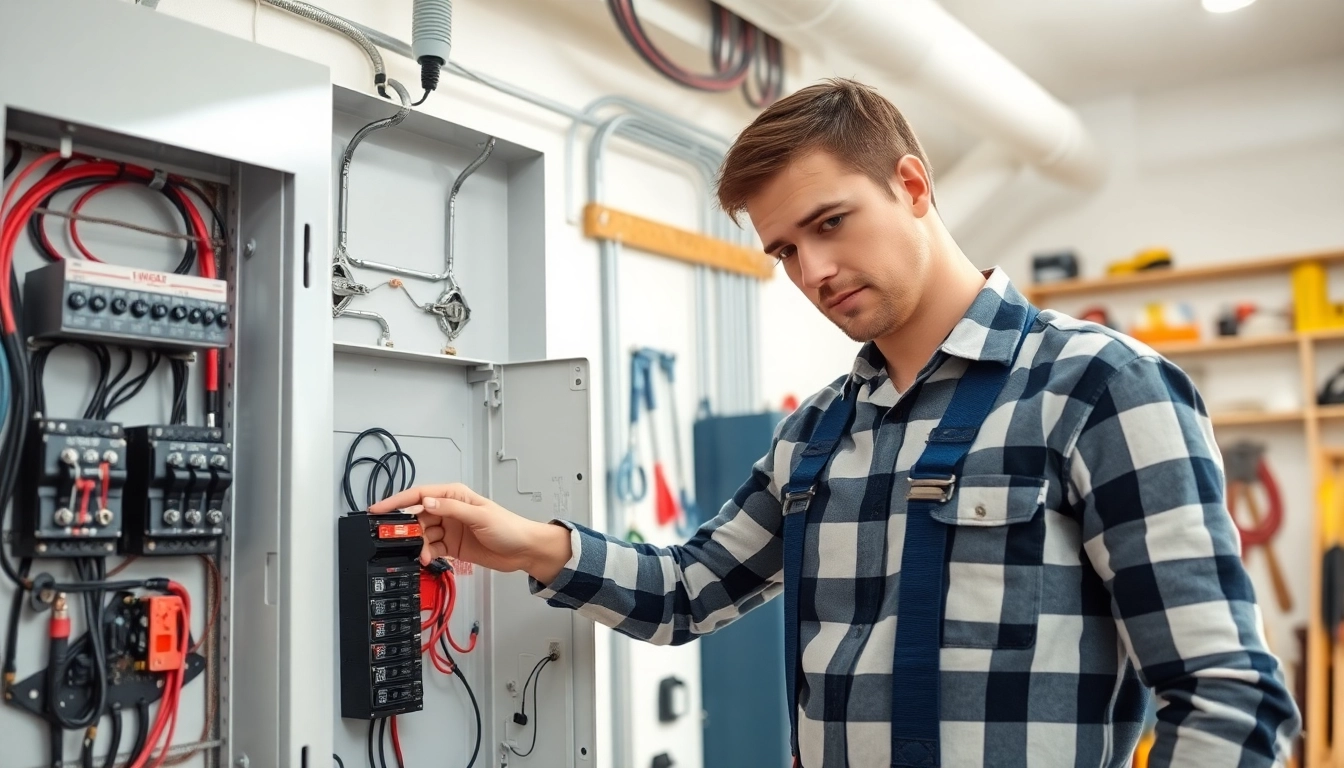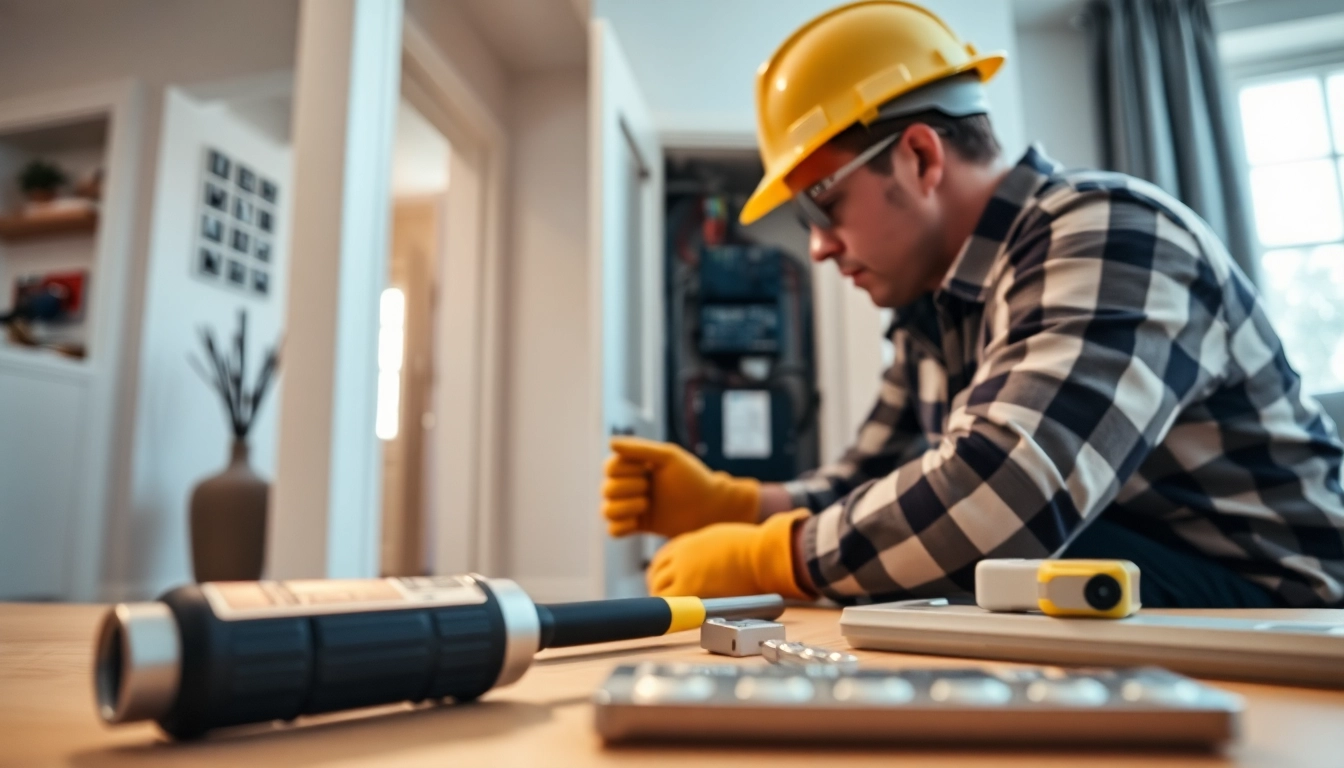Introduction to Electrical Panels
Electrical panels, often referred to as breaker boxes or circuit breaker panels, are the heart of a home’s electrical system. They distribute electricity from the main power line to individual circuits throughout the house, ensuring that electricity flows safely and efficiently where it’s needed. This article delves into the critical role of electrical panels, discussing when to upgrade them, maintenance tips, and important factors to consider during selection and installation.
Importance of Electrical Panels in Homes
The electric panel serves as the command center for your home’s electrical system. It manages energy distribution, enhances safety by preventing electrical overloads, and maintains the functionality of appliances and devices. An efficient electrical panel can facilitate a seamless energy flow, which is vital for modern homes that rely heavily on electricity for lighting, heating, and powering electronic devices.
Understanding the significance of electrical panels is crucial for homeowners, as even minor issues can lead to significant risks including power outages, fire hazards, and equipment damage. Moreover, with advancements in technology, older panels may not support increased electrical demands, necessitating upgrades to ensure safety and efficiency.
Common Types of Electrical Panels
There are several types of electrical panels available, each tailored to specific needs:
- Main Breaker Panels: These contain the main circuit breakers and are typically the primary panels found in homes. They serve to shut off all electricity in case of emergencies.
- Sub-Panels: These are used to distribute power to specific areas in larger homes or commercial properties, alleviating the load on the main panel.
- Load Centers: Load centers distribute electricity within a home and house multiple circuit breakers.
- Smart Panels: These modern panels offer features such as energy monitoring and circuit-level control, allowing homeowners to manage their power usage more effectively.
Basic Components of Electrical Panels
Every electrical panel comprises several essential components:
- Busbars: Conductors that distribute electricity to each circuit breaker.
- Circuit Breakers: Devices designed to protect electrical circuits from overloads and short circuits by tripping and shutting off power.
- Neutral Bus Bars: Where the neutral wires from various circuits connect, ensuring a return path for current.
- Ground Bus Bars: Connect the grounding wires from electrical circuits to prevent electrical shocks.
- Enclosure: The external housing that protects the internal components from physical damage and environmental factors.
Signs You Need to Upgrade Your Electrical Panel
Upgrading your electrical panel may seem daunting, but it can significantly enhance safety and functionality. Here are some signs indicating that it might be time for an upgrade:
Indicators of Insufficient Power Supply
If you frequently experience tripped breakers or blown fuses, it may be indicative of an overloaded electrical panel that can no longer accommodate the demands of modern living. Appliances like air conditioners, electric heaters, and high-powered devices can push older panels beyond their limits. Additionally, if your home was built several decades ago, it’s possible that the electrical panel’s capacity does not align with today’s energy consumption standards, often requiring a basic service upgrade from 60 amps to 100 amps or more.
Common Safety Hazards to Watch For
Electrical codes have evolved significantly over the years to enhance safety standards, and older panels might not comply with current regulations. Some hazards to look out for include:
- Burning Smell or Signs of Heat: Any burning odor or visible scorch marks around the electrical panel are red flags that should prompt immediate attention.
- Frequent Flickering Lights: This may indicate poor connections or an insufficient electrical supply.
- Warm or Hot Electrical Panel: The panel should be cool to the touch. Significant warmth can suggest a serious issue.
Benefits of Modern Electrical Panels
Upgrading to a modern electrical panel not only improves safety but also enhances efficiency. Modern panels are designed with technology that allows for better load management, energy distribution, and protection against electrical overloads and surges. Furthermore, many contemporary electrical panels support smart home integration, providing homeowners with the capability to monitor and control their energy consumption through mobile apps.
Choosing the Right Electrical Panel for Your Home
Selecting the right electrical panel is crucial for ensuring that your home meets its electrical needs while maintaining safety and efficiency. Here are factors to consider during panel selection:
Factors to Consider for Panel Selection
- Home Size and Power Needs: Assess the total electrical load required by your home, considering both current needs and potential future increases.
- Types of Appliances: Make sure the panel can support any high-demand appliances like HVAC systems or electric vehicles.
- Local Codes and Regulations: Complying with local electrical codes is essential. Consult with an electrician to ensure your panel meets local requirements.
Understanding Panel Ratings and Capacity
Electrical panels are rated based on their ampacity, or the maximum load they can handle, commonly starting at 60 amps and going up to 400 amps or more. For most residential homes, a 100-amp or 200-amp panel is sufficient. However, newer homes or those with increased electrical demands may require panels with greater capacities. It’s crucial to select a panel that not only meets your current energy consumption but also any expected increases in the future.
Brand Recommendations for Electrical Panels
While several manufacturers produce reliable electrical panels, some brands stand out for their quality and performance, including:
- Square D: Known for its durability and wide range of options suitable for various applications.
- Siemens: Offers great innovation and solid customer support, making it a popular choice among electricians.
- Eaton: Renowned for high-quality circuit protection devices and energy-efficient solutions.
Installation and Replacement Procedures
Installing or replacing an electrical panel is a complex task that requires careful planning and expertise. Whether you choose to tackle it yourself or hire a professional, understanding the steps involved is crucial:
Steps for DIY Electrical Panel Installation
For skilled DIY enthusiasts, the following high-level steps outline the installation process:
- Turn Off Power: Always ensure the main power is turned off before beginning any electrical work.
- Remove the Old Panel: Carefully disconnect the wires and remove the old panel from the wall.
- Install the New Panel: Secure the new panel in place and connect the wires to their respective terminals.
- Re-check Connections: Ensure all connections are tight and correctly configured before proceeding.
- Test and Seal: Once everything is connected, turn the power back on and test the connections. Seal any openings to maintain safety.
Hiring Professional Electricians: What to Expect
If you’re not comfortable with electrical work, hiring a licensed electrician is the best option. Expect them to assess your current electrical setup, recommend the right panel based on your needs, and ensure that installation complies with all local safety codes. A professional installation also includes a thorough inspection of the electrical system to identify any potential problems.
Cost Considerations for Electrical Panel Upgrades
The cost of upgrading an electrical panel can vary significantly based on several factors, including:
- Type and size of the new panel.
- Complexity of installation.
- Local labor rates.
On average, homeowners can expect to spend anywhere from $1,200 to $3,000 for a complete upgrade. It is crucial to obtain multiple quotes from licensed electricians to ensure a fair price and quality service.
Maintenance Tips for Electrical Panels
Proper maintenance of your electrical panel is essential for safety and longevity. Regular inspections and upkeep can prevent minor issues from escalating into more significant problems. Here are some maintenance tips:
Routine Checks and Inspections for Safety
Routine inspections should be conducted at least once a year. Look for:
- Signs of rust or corrosion on connections.
- Loose or frayed wires.
- Unusual odors or sounds coming from the panel.
It is also wise to evaluate whether the panel is excessively hot to the touch, as this indicates potential electrical issues.
Common Maintenance Issues to Address
Several common maintenance issues can arise with electrical panels, including:
- Tripped Breakers: Frequent tripping may indicate overloaded circuits or a malfunctioning breaker.
- Rust or Corrosion: This can compromise electrical connectivity and should be addressed immediately.
- Debris and Dust Accumulation: Keep the area around the panel clear of dust and debris, which can create safety hazards.
Extending the Lifespan of Your Electrical Panel
Maximizing the lifespan of your electrical panel involves proactive management and care. This includes scheduling regular professional inspections, promptly addressing any issues, and avoiding overloading the system by thoughtfully managing appliance usage.
Moreover, investing in modern panels with advanced technology can result in greater efficiency, lower energy costs, and enhanced safety features that extend the operational lifetime of your electrical system.



